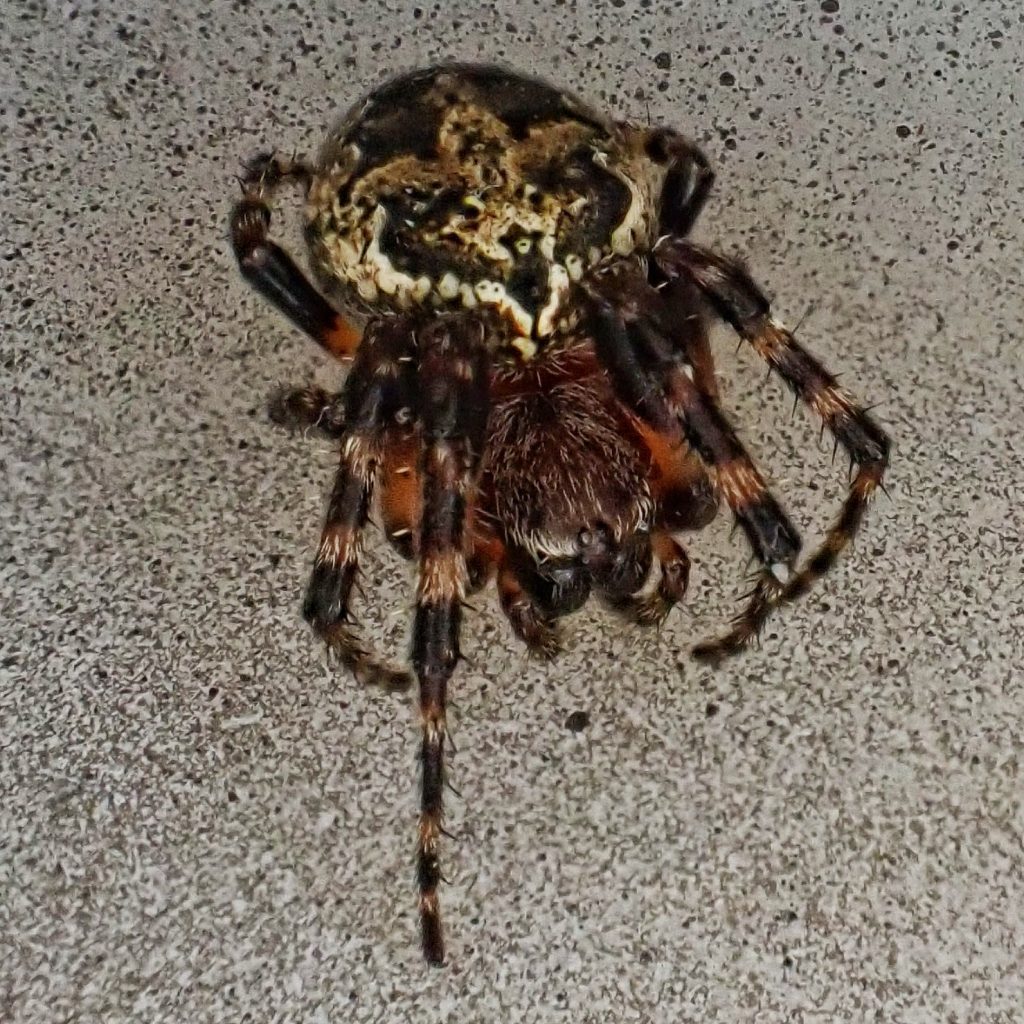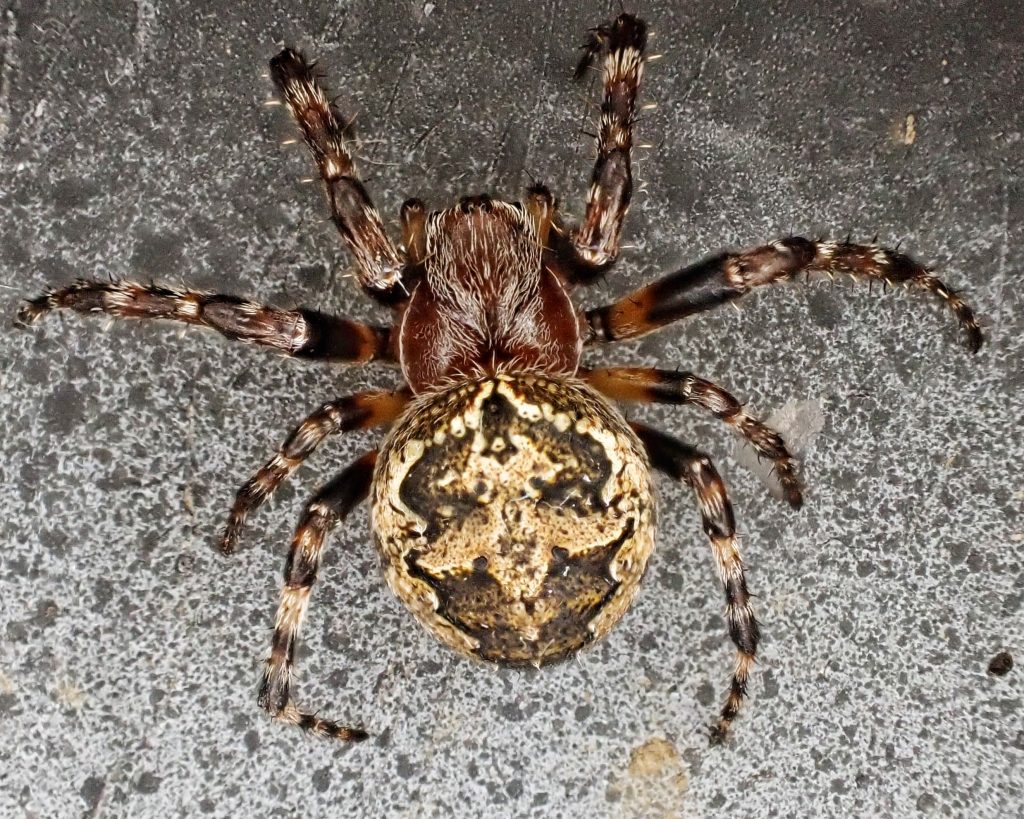
One of the cooler finds of my day spent spider hunting at Round Lake/Lacamas Creek was discovering this orbweaver in a web on an alder branch reaching out over the creek. For one thing the placement of the main web was obscured by the foliage of the tree, and I just caught a hint of a web in one of the side lines connecting it to the branch. And after finding the web, my initial inspection didn’t reveal a spider, but I did see, along the margin of the web, a curled leaf that was big enough to hide a spider. And when I plucked it out and opened it, there was this beautiful Larinoides patagiatus (several resources call these spiders by the common name ‘ornamental orbweavers’ or ‘bordered orbweavers’, but those don’t seem to be names accepted arachnological institutions).
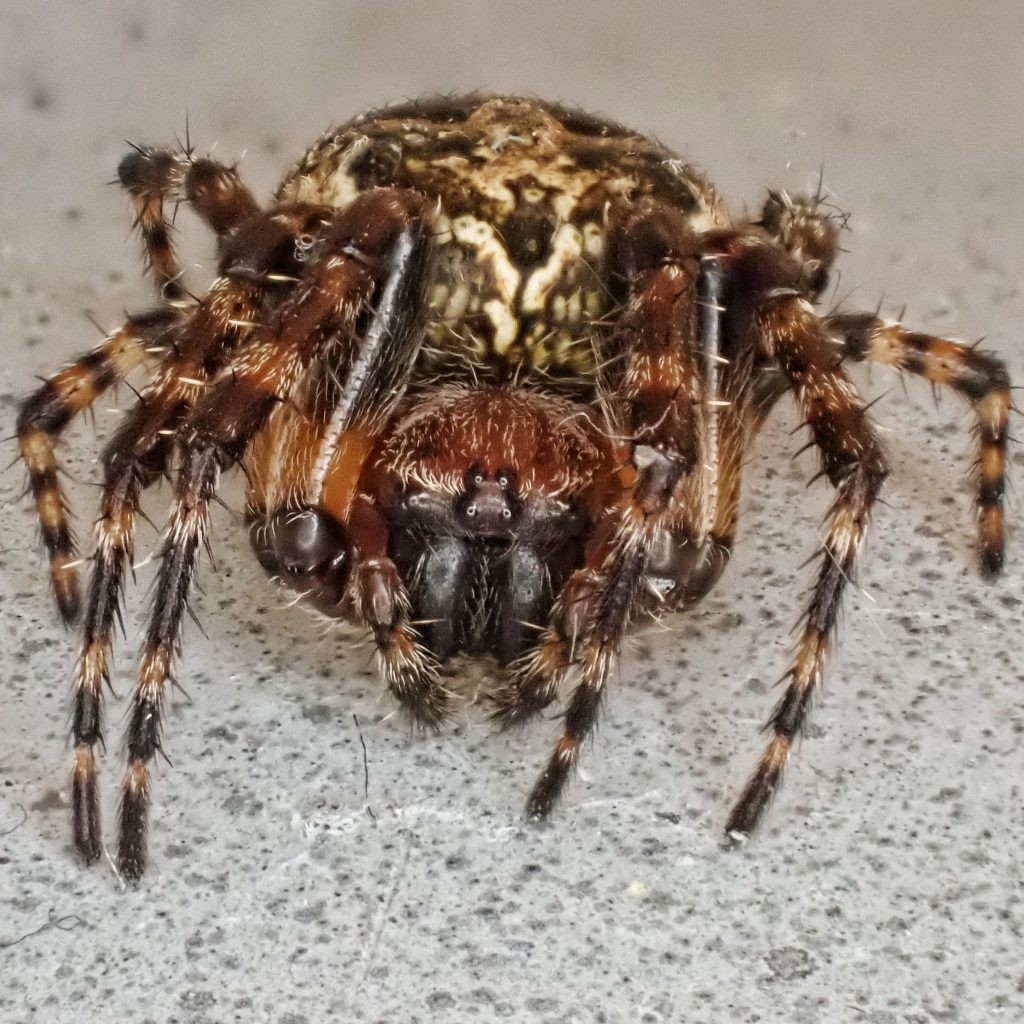
Of course I didn’t know that then, though I did wonder if it was the same species, or a closely related one, to the spiders I’d found earlier by the bathroom. And once I started identifying those Larinioides sclopetarius (Grey Cross Spider) , and doing a literature search, I became very hopeful that this was Larinioides patagiatus, since it is native and less synanthropic than the grey cross spider, which fit with the location where I found it. And almost as soon as I got it under the microscope I could see the necked and flaring epigynal scape that ruled out L. sclopetarius and identified it as L. patagiatus. Two of our three Larinioides on my first dedicated spider expedition of the year. I see that as a good sign, a benediction of sorts on my desire to highlight the spiders during this autumnal season.
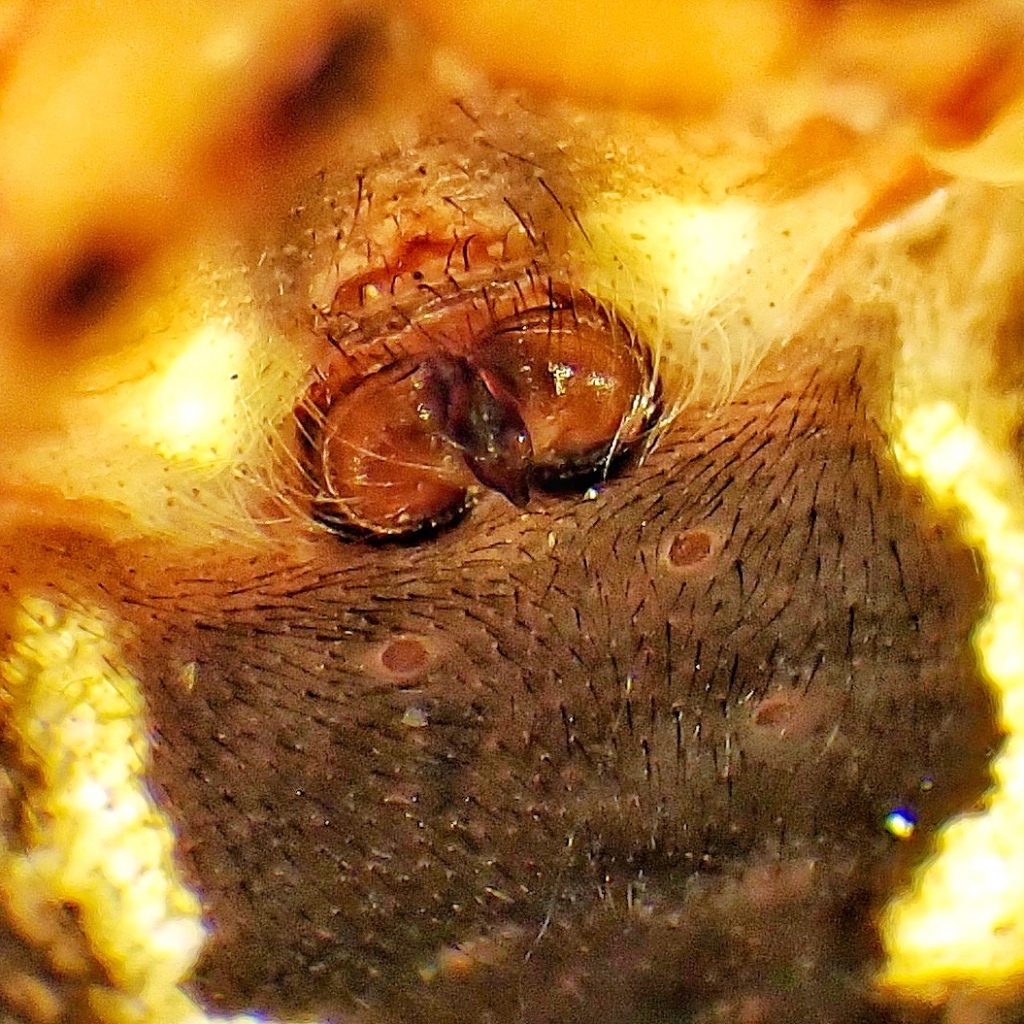
Description– Medium sized (5.5-11mm total body length, females larger than males) brown, grey, and white orbweaver, with a sort of leaf shaped marking on the abdomen that is darker than the rest of the abdomen, stout and fairly long, banded legs, and a hairy dark grey to brown carapace that may have a thin, light colored border; males have a swollen tibia 2, with clusters of macrosetae.
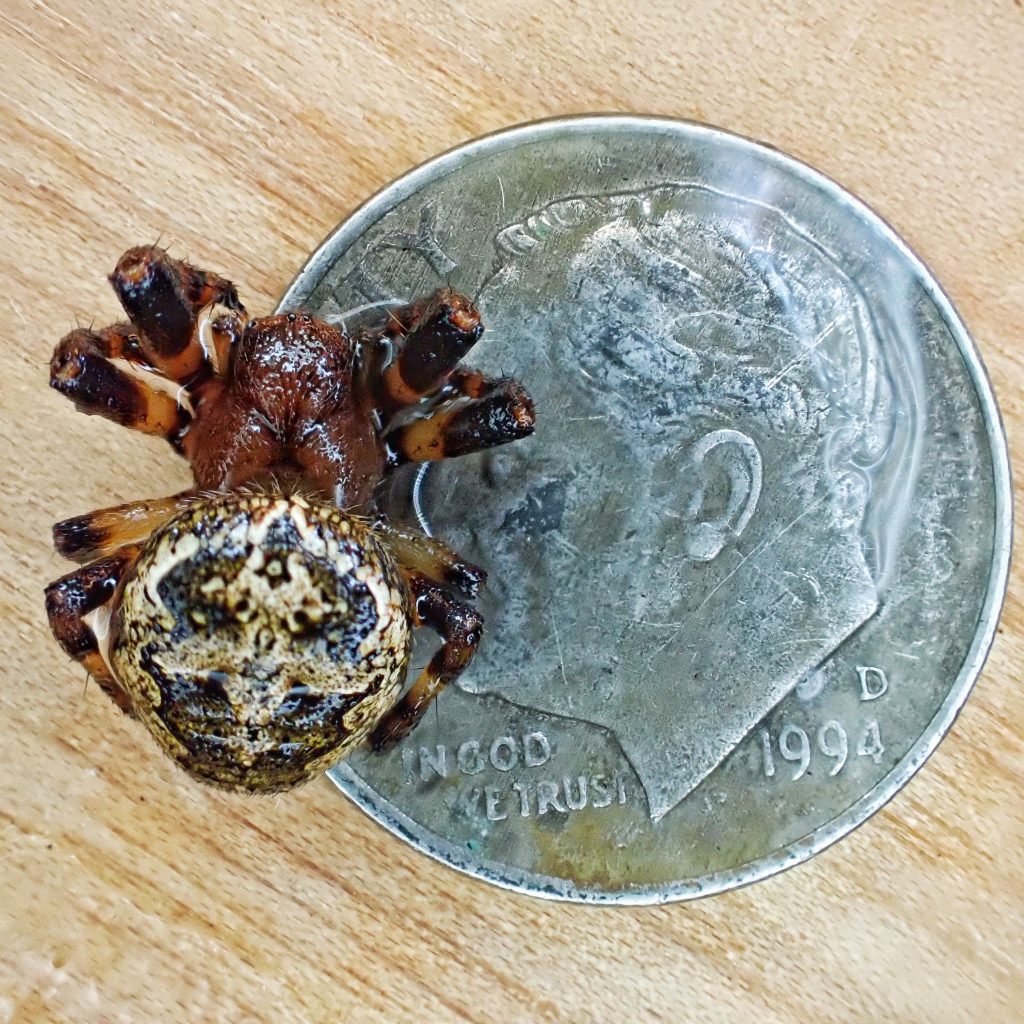
Similar species– “Separating Females: L. cornutus have a shiny, bald appearance and shorter legs, and no middle band on metatarsus IV.L. sclopetarius have longer legs than the other two species, and it has a dark middle band on metatarsus IV. It also has a darker pattern & a carapace with more white on its borders…Genus Larinioides – Furrow spiders – BugGuide.Net , which has a great photo comparison of the three; positively differentiating males requires some microscopy; L. sclopetarius has cylindrical tibia 2, which lacks clumps of macrosetae; L. cornutus seems to have more robust and shorter legs. A key to Larinioides (under the name Nuctenea) can be found at v.146 (1974-1975) – Bulletin of the Museum of Comparative Zoology at Harvard College – Biodiversity Heritage Library
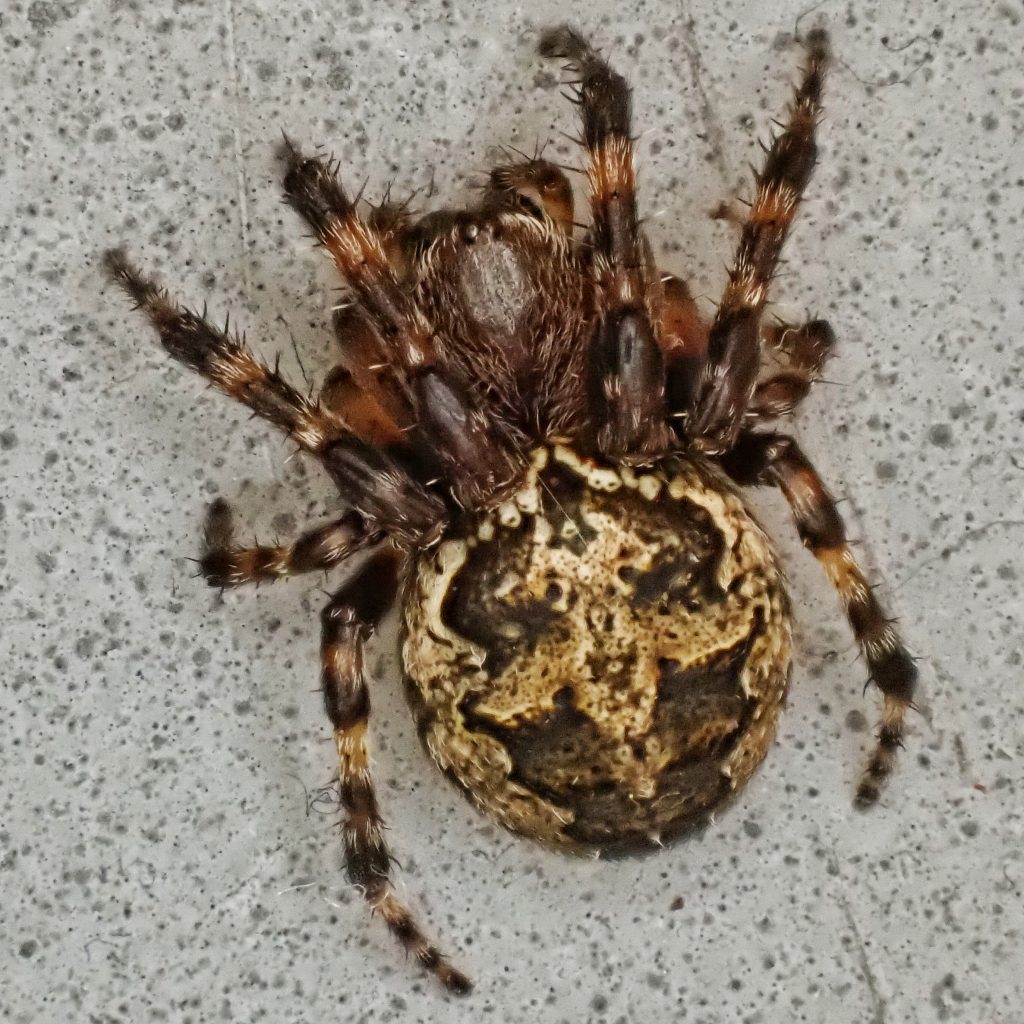
Habitat– Brushy areas, usually near or in woodlands or forests, often near water; also may be found on man made structures.
Range– Seems to be native, with a Holarctic distribution; found region wide in the PNW in appropriate habitat, but mostly absent from shrub steppe; for a map of observations see Observations · iNaturalist
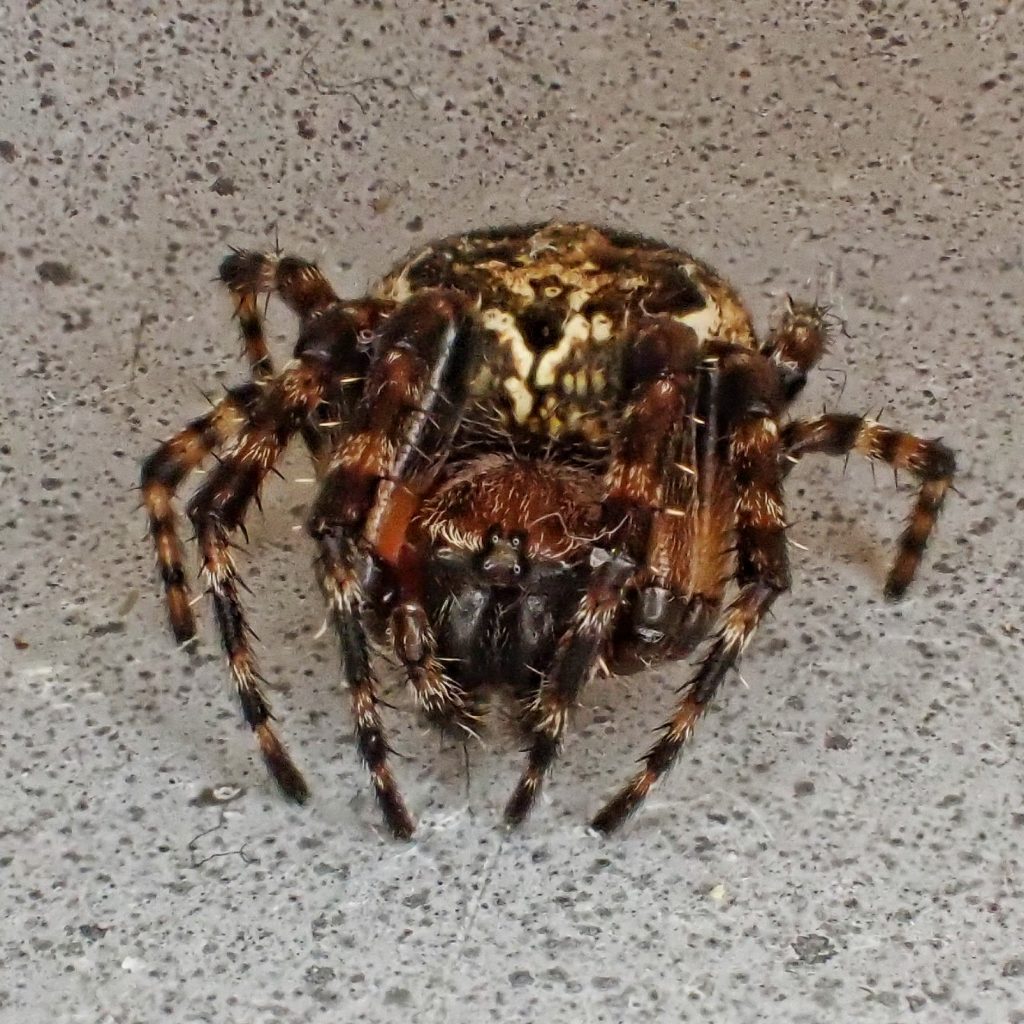
Eats– Flying insects like flies, midges, mosquitoes, mayflies, caddisflies, and probably anything else the web can contain and the spider can subdue.
Eaten by– There are probably spider wasps (Pompilidae) that paralyze these spiders and use them for a larval host, and I’m sure gleaning birds prey on them, but I can find nothing specific to this species.
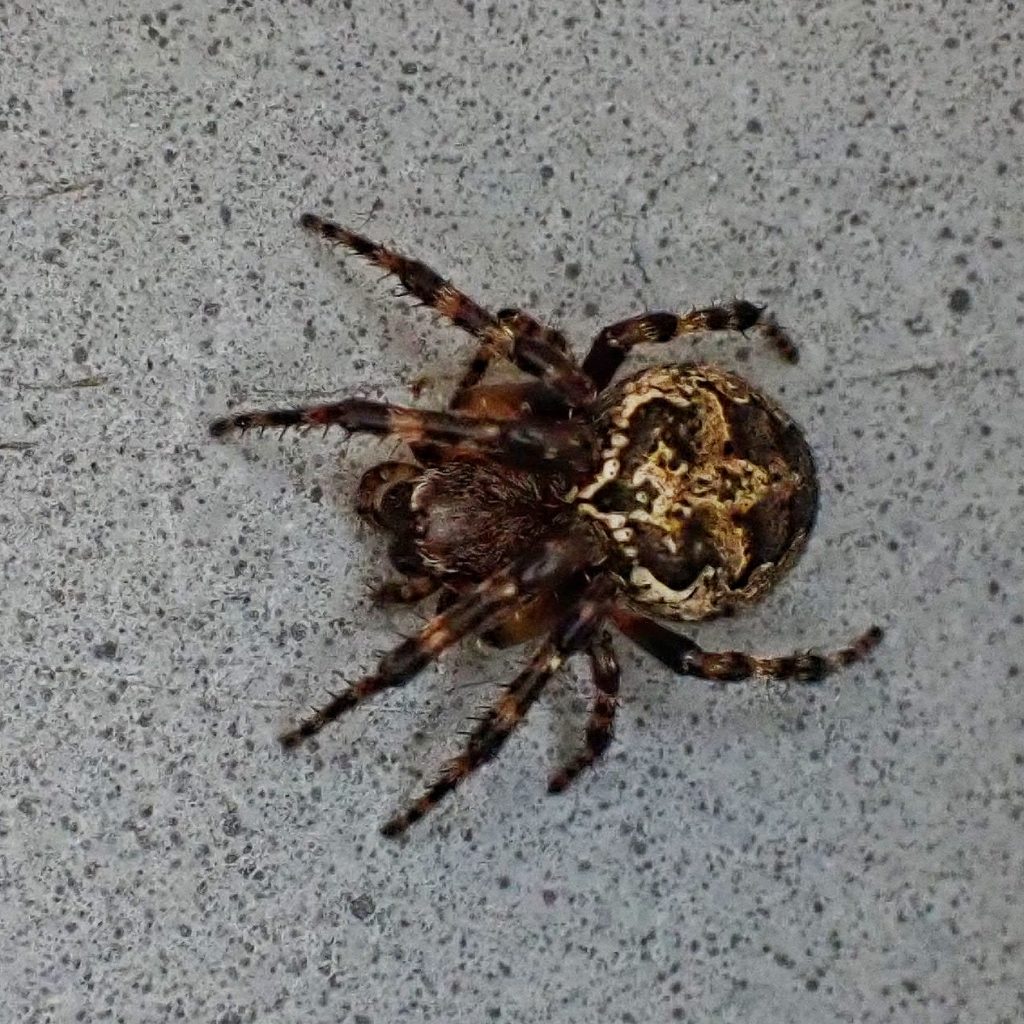
Adults active– April into November
Life cycle– It seems likely that eggs are placed in a cocoon of silk and hidden in leaves near the web, and there may be multiple broods per year since it seems that there are mature spiders almost year around, but I can’t seem to verify this information; adults may overwinter, especially the females.
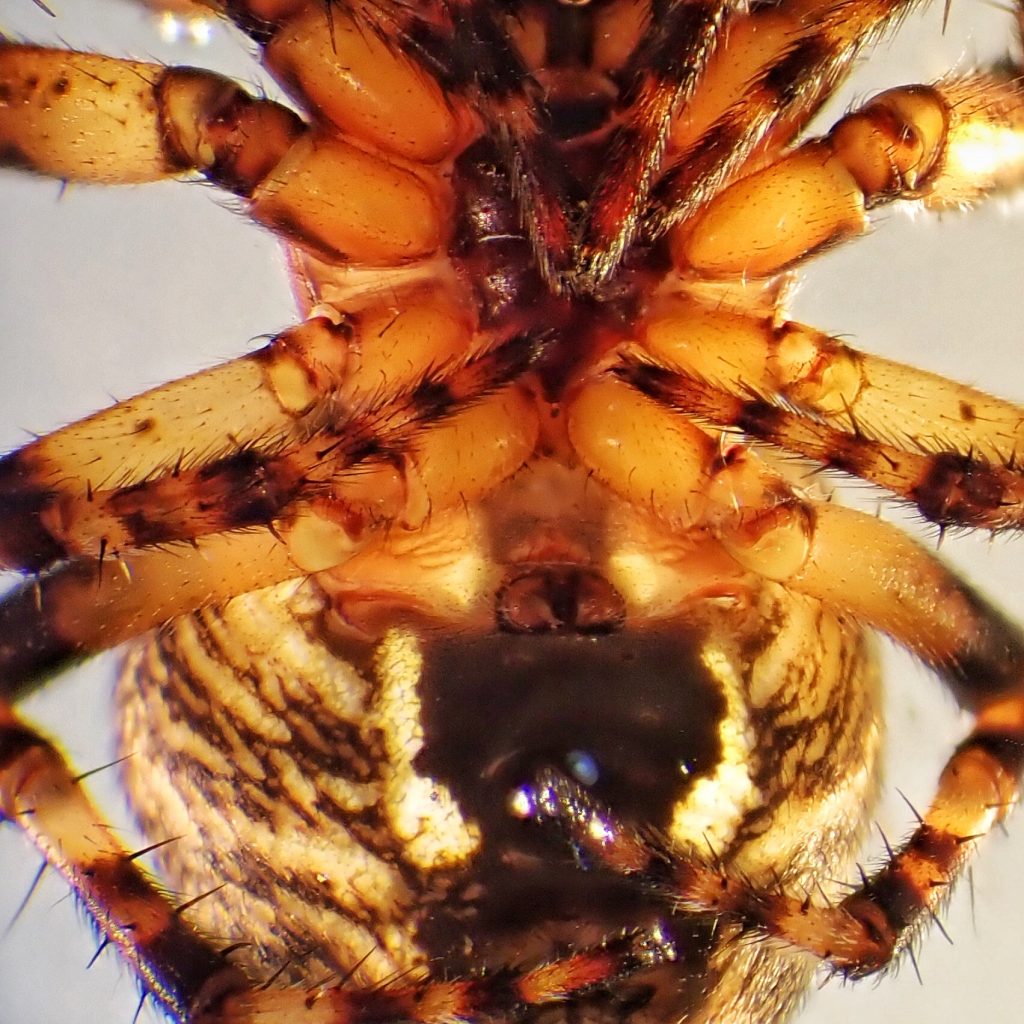
Etymology of names– Larinioides means ‘like Larinia’, which is another genus in the family Araneidae, though I don’t see the resemblance, Larinia having an elongated abdomen. The specific epithet patagiatus seems to be from the Latin word for ‘border/the gold edging of a garment’, but I cannot ascertain to what border or gold edging Clerck was referring, since L. sclopetarius has a more distinct border and Clerck named them both at roughly the same time.
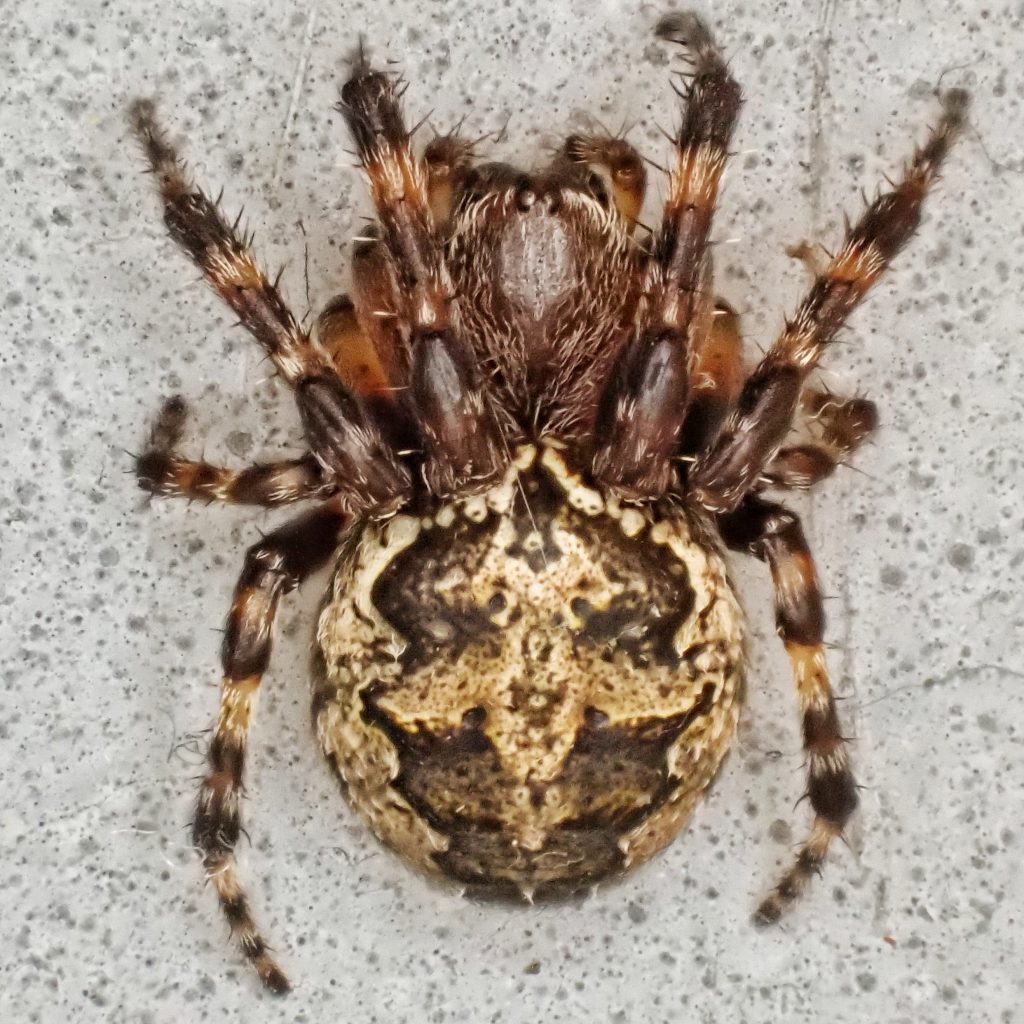
Species Larinioides patagiatus – BugGuide.Net
Ornamental Orb Weaver (Larinioides patagiatus) – Missoula Butterfly House & Insectarium
Araneidae-cz – Larinioides patagiatus
Summary for Larinioides patagiatus (Araneae)
